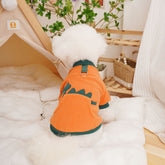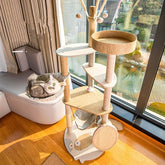Mastering Mythic Bastionland: A Complete Guide to Preparing and Running Engaging Campaigns
Table of Contents
Key Highlights:
- Comprehensive step-by-step methods for preparing a Mythic Bastionland campaign, ensuring a rich play experience with minimal prep time.
- Effective use of tools like hex maps, Spark Tables, and character generators to enhance world-building and narrative depth.
- Dynamic techniques for maintaining player engagement and story momentum throughout sessions, including improvisation and conflict creation.
Introduction
As tabletop role-playing games continue to captivate players around the globe, the importance of effective preparation has never been clearer. Mythic Bastionland, a unique and engaging RPG system, invites Game Masters (GMs) to embrace light-hearted prep while crafting intricate worlds filled with adventure and intrigue. With two campaigns successfully run and the experience of pausing another game to dive deeper into these fantastical realms, this guide distills effective strategies for starting and maintaining a Mythic Bastionland game. For those asking questions such as "How do I get started?" and "What should I prepare?" the following insights provide a roadmap to set any aspiring GM on the right path.
Preparing for the Adventure
Get Ready: Assemble Your Starter Kit
Preparation for a successful campaign doesn't require encyclopedic knowledge or elaborate world-building; instead, the aim is to create a "starter kit" you can draw upon during gameplay. Begin by assembling the components necessary for your unique realm, including:
- A usable hex map, either handmade or borrowed.
- A Seat of Power, complemented by some Holdings to stimulate the political backdrop.
- Colorful rulers with spark-table details to add depth.
- A selection of Myths and Landmarks to enrich the narrative.
- A handful of names to give your world substance.
Make the Map: Mapping Your Realm
Creating the hex map serves as the first step in your preparation. In Mythic Bastionland, realms are deeply intertwined with the geographical representation of your campaign. Here are some practical tools to utilize for mapping:
-
Official Realm Sheets: These offer guidance on how to structure a realm along with a blank template for your personal designs found on the Mythic Bastionland itch.io page.
-
Hex Kit: A popular desktop application allows for rapid hex map creation. While it has associated costs, tile sets can further customize your realm.
-
HexPad: A free browser option tailored for creating hex maps rapidly. This tool is perfect for GMs wanting a no-fuss approach to start plotting their games.
For those uninterested in drawing, several automated realm generators exist, including Perilous Shores and the Mythic Realm Maker. Whichever method you select, your focus should be on facilitating quick access to a playable map, leaving room for adaptation in later sessions.
Populate the Realm: Breathing Life into Your World
With a map created, the next step involves populating your realm with its characters and intricacies. Here’s an outline of how to effectively fill in the details:
-
Identify Barriers: To evoke a sense of danger and travel, place barriers like rivers or cliffs within roughly one-sixth of your hexes, ensuring that movement through the realm remains unpredictable.
-
Establish Rulers: Consider who holds power and develop the character of these leaders by utilizing the People spark tables, ensuring you add nuance to their backgrounds and motivations.
-
Create Holdings: Using the Civilisation tables, sketch out the fundamental nature of each Holding, including details like population and cultural elements—remembering that food often provides rich flavor.
-
Define Myths: Roll out your Myths and position their hexes thoughtfully. Place them in hard-to-reach areas to maintain an air of mystery and allure.
-
Develop Landmarks: Landmarks serve as backdrops for interactions and can be fleshed out through rolling on specific prompts—aim for variety and intrigue.
Keeping notes concise is essential; one or two lines per element is sufficient. This directive encourages improvisation and organic gameplay where moments unfold based on players’ interactions with the world around them.
Do I Need More Prep?
The beauty of Mythic Bastionland lies in its flexibility. You don’t need an exhaustive wealth of detail before beginning. When extra depth is required, the Spark Tables and Prompts from the rulebook offer ample support for generating content on the fly. Trust in the simplicity of the system as it allows the game to evolve naturally through player engagement.
Spark Conflict: Adding Dynamic Layers to the Narrative
Conflict enriches storytelling in Mythic Bastionland, helping to transform a static realm into a dynamic tapestry of intrigue. Utilize the Spark Tables to introduce internal strife within each Holding and create inter-Holding tensions. Here’s how to construct conflicts effectively:
-
For each Holding, identify an internal struggle by rolling on relevant tables that reflect drama, woe, or emerging news.
-
Define relationships between each pair of Holdings, engaging with the rulers’ characteristics to produce interesting contradictions or alliances that may floor player engagement.
-
Use lightweight prompts—enough to spark ideas without overwhelming detail—to set a foundation for player-driven narratives to grow organically.
Starting Your Campaign
Initiate Play with Purpose
After preparing your realm and the characters within, it's time to start the game. While high-agency sandbox play thrives on exploration, a clear, compelling hook can help direct player focus in initial sessions. Kick-off the campaign by establishing a goal or a quest that players can grasp early on, driving them forth into the narrative.
Incorporating themes of travel and quests can help ground players in the world you’ve drawn. For example, having the players begin as Knight-Errants seeking guidance from a local Seer provides a robust narrative launchpad.
Between Sessions: Maintaining Momentum
Once your campaign is active, it’s crucial to focus on iterative preparation between sessions to keep the narrative flowing. Capturing what has transpired, pushing any off-screen timers forward, and polishing upcoming hooks will aid in maintaining continuity and excitement for your players. These actions can be accomplished through a series of practices designed to ensure seamless transitions between gameplay:
Employ Improvisation Lore Tables
Instead of crafting extensive lore notes, construct lore tables that feature key characters or locations and prompt specific actions or moments. This can add richness while allowing for spontaneous engagement. Each table entry should either reveal something new or relate to another existing element, deepening the world organically.
Treat Holdings as Myths
By considering Holdings as ongoing Myths, you can elevate their significance within the narrative. This approach allows you to treat conflicts as evolving stories that can resolve over time, introducing layers of complexity that draw player attention and instigate action.
Track Your Timeline
Effective timekeeping is essential in a world that changes dynamically. Utilize a straightforward calendar system to keep track of events, resolutions, and scenarios unfolding off-screen. Logging significant occurrences keeps the realm fresh and alive for players while providing a reference point to encourage engagement and resolution.
FAQ
How do I start a Mythic Bastionland campaign with little preparation?
You don’t need extensive preparation to start a campaign. Focus on assembling a basic map and some core characters, and use the tools available for generating content on-the-fly as needed.
What resources can I use to assist with campaign preparation?
Consider utilizing hex mapping software, Spark Tables from the rulebook, and community generators available online for real-time content creation that keeps gameplay spontaneous and fresh.
How much detail should I have before starting gameplay?
A minimal amount of detail, including establishing nodes and barriers within your realm, is sufficient. Player engagement during sessions will provide additional context and richness.
What if players create conflict between their characters?
Embrace any emergent conflicts between characters as they can provide invaluable narrative threads. Use these for creating engaging story arcs that enrich the campaign dynamics.
How can I ensure the world feels alive throughout the campaign?
Incorporate improvisational lore, track unresolved story threads, and allow for seasonal changes to keep your realm vibrant and responsive to player choices.
The methods found within Mythic Bastionland provide an extraordinary toolkit for GMs aiming to facilitate compelling journeys for their players, balancing depth and exploration with ease of play. With this guide as your foundation, embark on the adventure to create immersive and memorable campaigns that resonate long after the table is cleared.





